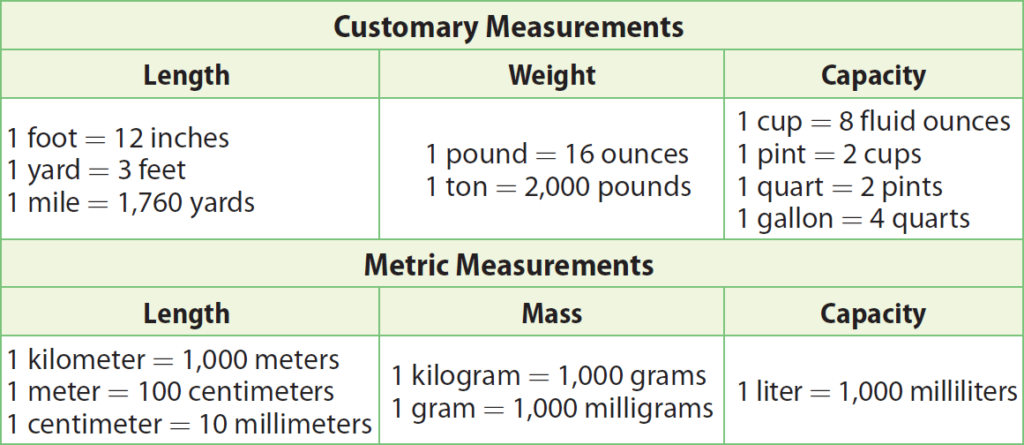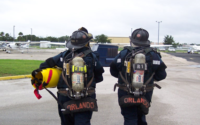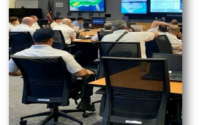The Essentials of Measurement for the Aspiring HazMat Technician
Bobby Salvesen
Beyond the Beeping: The Craft of Meter Reading
Imagine you are in the thick of an incident, a hazardous maze that only you can navigate. Your meter, an extension of your senses, guides you, beeping urgently. But it’s not about how loud the beep is or how quickly the numbers change; it’s about the story behind those numbers. Your role extends well beyond reading; it’s interpreting the cryptic messages your meter conveys. In the heat of the moment, when every second counts, understanding these readings isn’t just part of the job—it’s what sets a skilled technician apart from a novice. Recognizing the difference between harmless and harmful, between stay or evacuate, hinges on your ability to decode the data that your device provides.
A Hollywood Misstep: Parsecs and the Art of Measurement
Let’s take a slight detour into pop culture to illustrate a point. In the world of “Star Wars,” Han Solo boasts about the Millennium Falcon’s speed, saying it made the Kessel Run in less than 12 parsecs. It’s a classic line, but it conflates distance with time. This isn’t just a quirky movie error; it serves as an entertaining yet enlightening example of why understanding units of measurement is critical. If such a mistake can slip into Hollywood’s narratives, it’s easy to see how it could slip into real-world scenarios. For a HazMat technician, such a mix-up could mean the difference between a successful intervention and a dangerous mishap.
Navigating the Two Measurement Systems

In America, our customary units are like an old friend—familiar but a bit complicated. Inches, feet, and miles for distance; ounces and pounds for weight; pints, quarts, and gallons for volume. These units are ingrained in our daily life, yet they often require convoluted conversions (remember, sixteen ounces to a pound). Contrast this with the metric system, the global standard, where everything scales with a simplicity that’s almost elegant. The metric system is the lingua franca of science, and as a HazMat technician, becoming fluent is non-negotiable. The rest of the world uses meters, grams, and liters—units that interconnect with the simplicity of a decimal point shifting.

The Cool Precision of Kelvin
Delving into Kelvin, you’re not just dealing with another way to measure temperature; you’re tapping into the universe’s baseline for cold. Absolute zero, measured in Kelvin, is more than just a low number—it’s the definitive end of the thermal line, where molecular motion ceases. In your line of work, grasping Kelvin isn’t about handling cold substances; it’s about having a thermometer that measures with scientific precision. Knowing the exact temperature can be crucial, especially when dealing with chemicals that have strict temperature thresholds for safe handling.
Unit Conversion: Your Digital Sidekick
As a HazMat technician, you’ll often find yourself switching between systems of measurement, especially when communicating with international teams or interpreting safety data sheets from different countries. Here, technology is your ally. With a world of apps, websites, and digital tools at your disposal, unit conversion no longer has to be a dreaded chore. These tools are the quiet sidekicks in your hazardous material adventures, doing the heavy lifting so you can stay focused on the task at hand—ensuring safety and preventing disasters.
PPM and PPB: Slicing the Air
Understanding parts per million (PPM) and parts per billion (PPB) is akin to mastering the nuances of a new language—it’s about understanding the scale and significance of concentration. It’s not merely a fraction; it’s a precise expression of how much of a substance is present in the air you breathe. Whether it’s measuring toxins, contaminants, or oxygen levels, these ratios can inform critical decisions. Grasping these concepts solidifies your role as a defender against invisible threats, with your meter translating the silent but potent language of air quality.
LEL and Concentration: The Flammability Factor
Grasping the nuance between percent concentration and percent lower explosive limit (LEL) is more than academic—it’s a matter of safety. These aren’t just numbers; they’re indicators of how much hazard is present and how explosive the environment could be. Every gas has its own LEL, and your understanding of this can prevent an ignition or explosion. As you read your meter, remember you’re reading potential energy, the gap between safety and combustion, and your knowledge is the barrier that protects against crossing that line.
Radiation Units: The Importance of the Micro
In the realm of radiation, the micro is mighty. Microrem, the smallest unit you’ll typically encounter, is the key to simplifying complex readings. When your meter displays a string of numbers, what you’re seeing is a scale. One Microrem (uR) might seem insignificant, but it’s a fundamental building block. Understanding this scaling can streamline your process, saving you from mathematical headaches and keeping your focus on safety.
The Invisible Cube: Air Quality in Metrics
Visualizing air quality metrics requires a certain imagination. Picture a cubic meter of air—a block the size of a large beach ball—and then imagine it’s not just air but a vessel carrying mercury vapor, particulates, or other contaminants. Your meter’s readings, whether in milligrams or micrograms per cubic meter, turn this invisible cube into a quantifiable space. This visualization helps you to not just read the air quality, but to understand it, making your assessments more intuitive and your actions more informed.
Precision in Reporting: Unit Accuracy Matters
In the high stakes’ world of hazardous materials handling, your reports are as crucial as your initial response. Detailing your findings with precise units is non-negotiable; after all, ‘mg’ versus ‘g’ can be the difference between a routine situation and a catastrophe. Ensuring that your data is as accurate as possible protects not just you and your team, but the community at large. It is a critical aspect of the job, one that underscores the importance of your role and the trust placed in your hands.
A Measured Conclusion
Equipped with these insights into the art of measurement, you stand at the threshold of transforming from a mere observer to a guardian of safety. The beeps and flashes of your meter aren’t just signals—they’re the language of a hidden world of hazards. As you parse through units and interpret silent dangers, you’re not just doing a job; you’re crafting a story of caution, action, and preservation. But mastering this narrative requires more than just knowledge—it demands comprehensive training.




